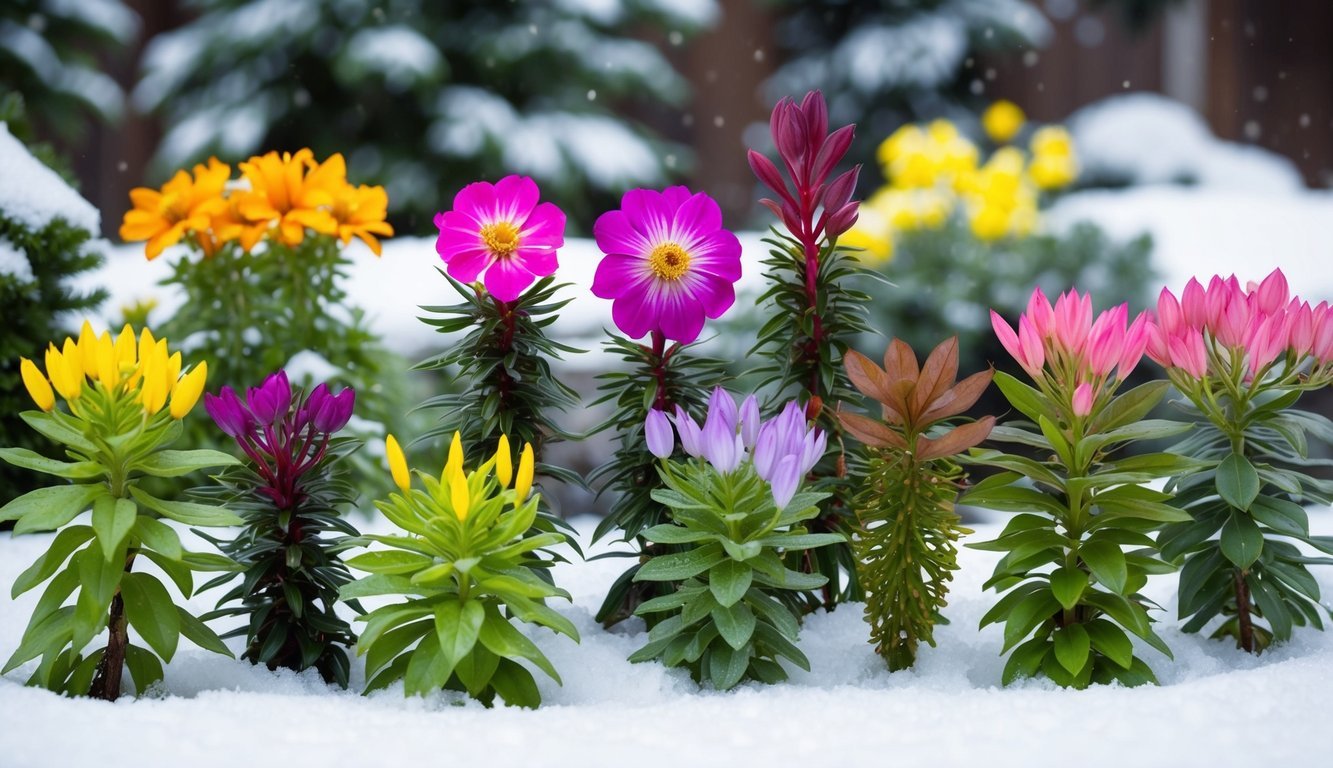 When winter sweeps in with its icy breath, many gardens can feel the brunt of the chill.
When winter sweeps in with its icy breath, many gardens can feel the brunt of the chill.However, by choosing native plants that are adept at withstanding extreme cold, you can create an outdoor space that not only survives but thrives through the frigid months.
Jerad Bryant, a native plant gardening expert, shares a well-chosen selection of 13 plants native to the United States that excel in frosty conditions. From late fall to early spring, frost can loom over gardens throughout North America, jeopardizing delicate plants by stripping moisture and freezing stems.
Without natural defenses, many species could perish before spring arrives—a heartbreaking scenario for any gardener. Remarkable Traits of Cold-Adapted Plants Plants that have adapted to cold climates possess some remarkable traits.
Many belong to the perennial category, braving the winter by slipping into a cozy dormancy.
As temperatures warm, they spring back to life.
Some showcase robust, thick foliage that can weather freezing temperatures, while others, being deciduous, drop their leaves to protect themselves. Opting for native plants comes with a host of benefits; they tend to demand less water, fertilizer, and general maintenance than non-natives.
Beyond convenience, they also provide vital nectar and pollen to support beneficial insects during their spring awakening.
This curated list of 13 hardy groundcovers, perennials, and deciduous shrubs can turn your cold-weather garden into a resilient, vibrant oasis.
- Purple Coneflower (Echinacea purpurea)
This adaptable plant is a favorite for various landscapes, where it adds charm to borders and offers a splash of color in drought-resistant gardens.
It also makes for exquisite floral arrangements.
- Kinnikinnik (Arctostaphylos uva-ursi) A superb groundcover for cold climates, Kinnikinnik spreads low to the ground and can thrive even in the challenging USDA Hardiness Zone 2, especially when aided by a layer of mulch.
- Pussytoes (Antennaria dioica) Originally from Alaska, this hardy native plant thrives in icy conditions, making it a prime candidate for frigid gardens.
- Dense Blazing Star (Liatris spicata) With its striking feathery spikes of purple flowers extending above slender, grass-like leaves, this plant beautifully enhances any garden’s aesthetics.
- Fireweed (Epilobium angustifolium) An integral element of many natural landscapes, fireweed is celebrated for its rapid growth following wildfires, playing a crucial role in ecological recovery.
- Ostrich Fern (Onoclea struthiopteris) This fern thrives in shady areas, producing delicious fiddleheads that not only contribute to your garden’s diversity but are also edible.
- Purple Coneflower (Echinacea purpurea ‘pallida’) A striking variation of the classic coneflower, this plant goes dormant during winter and bursts forth in vibrant colors as spring arrives.
- Rocky Mountain Columbine (Aquilegia coerulea) This lovely wildflower can endure harsh winter conditions and flourishes in both full sun and partial shade, adding beauty wherever it grows.
- Inkberry (Ilex glabra) This evergreen shrub excels in a variety of settings and serves as an essential food source for local bird species.
- Highbush Cranberry (Viburnum trilobum) Beyond its stunning seasonal colors, this dwarf viburnum produces tasty berries that delight both wildlife and humans alike.
- Red Twig Dogwood (Cornus sericea) Known for its striking red stems, this versatile shrub offers a pop of color, even in the depths of winter, ensuring your garden remains visually appealing all year round.
- Silverberry (Elaeagnus commutata) Reaching heights of up to 15 feet, this robust shrub functions well as a windbreak or privacy screen, adding structure to your landscape.
- Sweet Pepperbush (Clethra alnifolia) Attracting butterflies and hummingbirds alike, this delightful plant flourishes in coastal regions, bearing fragrant flowers that enhance any garden’s sensory appeal.
They are perfect choices for gardeners looking to enhance the vibrancy and sustainability of their outdoor spaces, even through the frostiest of winters.
Source: Epicgardening.com

